Melbourne's $11 billion Metro Tunnel is on track to continue construction, despite highly-publicised cost blowouts and added delays due to the coronavirus pandemic.
The Victorian government-led project will result in the creation of a twin nine-kilometre tunnel running from Kensington to South Yarra and five new underground stations at Arden, Parkville, CBD North, CBD South and Domain.
The new infrastructure project, which aims to untangle bottlenecks in the City Loop, will allow an additional 19 train services to operate across the network during peak periods.
More than half a million extra passengers will be able to use Melbourne’s rail network every week, and save commuters up to 50 minutes each day on their journey.
The transport project was earmarked to be completed by 2025, however, costs have been rumoured to already have blown out by as much as $3 billion, partially due to the scope of the project being widened and unexpected technical risks.
It could also find itself stalled due to the unfolding coronavirus crisis, which has already seen shutdown of all non-essential activity across the state.
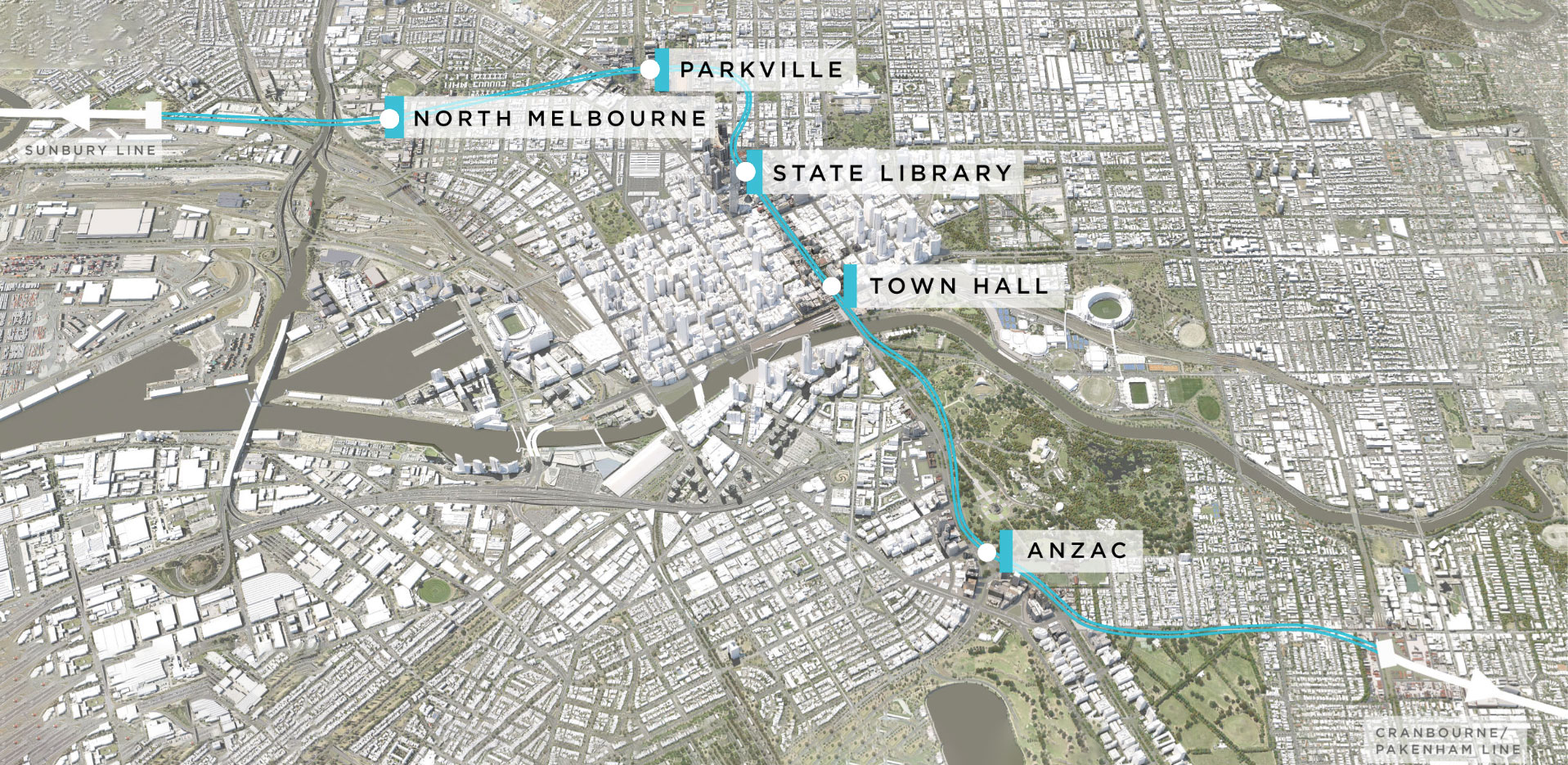
Key stakeholders
The project is currently being constructed by the Cross Yarra Partnership—a consortium led by Lendlease Engineering, John Holland, Bouygues Construction and Capella Capital.
The consortium beat out a rival bid from Acciona Infrastructure, Ferrovial Agroman, Honeywell, Downer EDI and Plenary Origination and another from Pacific Partnerships, CPB Contractors, Ghella, Salini Impregilo Serco and Macquarie Capital in June 2017 for the $6 billion tunnelling component of the project as well as the construction of the five underground stations.
John Holland, which is owned by China Communications Construction Company, was selected for the $324 million package for preparatory work on the project in 2016.
The contract saw the excavation of 35-metre deep shafts adjacent to Swanston Street to enable construction of the two new central city stations.
Underground stations
Architecture firm Hassell in collaboration with Weston Williamson and London-headquartered Rogers Stirk Harbour and Partners are responsible for the Metro Tunnel station designs.
The development will also see the construction of underground walkways at Flinders Street and Melbourne Central stations, which will enable the passengers to change easily between the Metro Tunnel stations and the City Loop.
Each station will draw on the local character of each location in their design and layout.
North Melbourne Station will feature a large-scale brick arched entrance to reflect the area's industrial heritage and skylights that would enable natural light on to the platforms and concourse.
The State Library and Town Hall Stations in the heart of the CBD will have entrances that create new meeting places, with redesigned laneways including cafes and retail shops. Sweeping arches will frame wide platforms underground.
Anzac Station in Domain will have a canopy offering both natural light and weather protection for passengers moving between trains and trams.
In Parkville, a glass feature roof at the Grattan Street entrance will give a tree-lined view as well as natural light into the station concourse.
Anzac Station
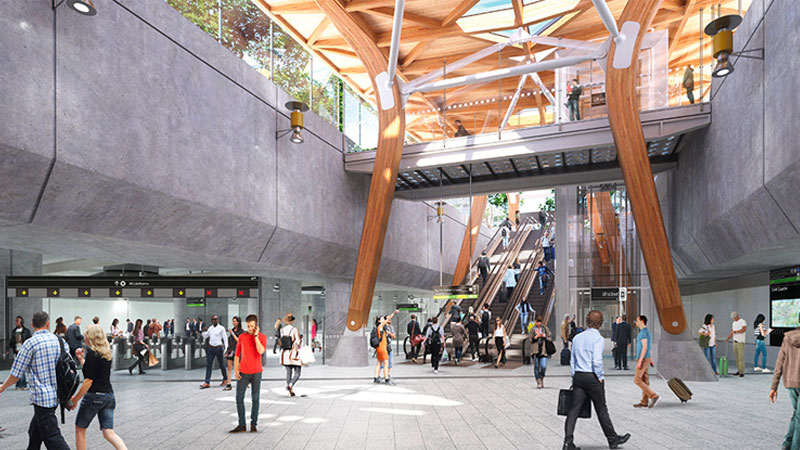
Key facts:
• Located directly under St Kilda Road near the intersection of Albert Road and Domain Road
• The station will be accessed from four entry points
• A new tram interchange is planned, the first in Melbourne with a direct platform-to-platform connection between the train and tram network.
Town Hall Station
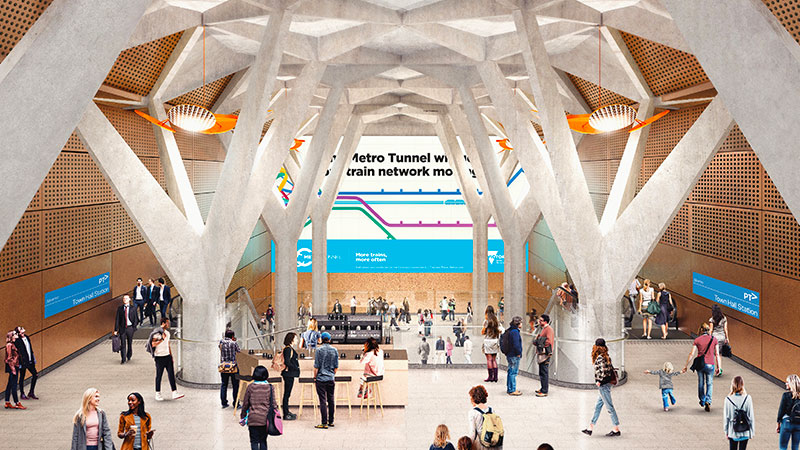
Key facts:
• Located under Swanston Street, between Flinders Street and Collins Street
• Passengers will be able to access the station from seven entry points
• Passengers will move between the new station and nearby Flinders Street Station platforms via a direct underground connection to Campbell Arcade.
State Library Station
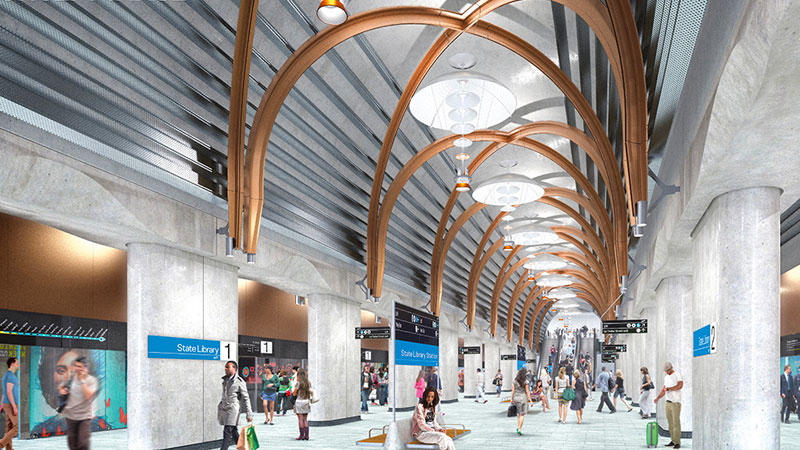
Key facts:
• Located under Swanston Street, between La Trobe Street and Franklin Street
• The new station will have three entrances, including the underground connection directly into Melbourne Central station
• A’Beckett Street will be permanently closed to through traffic between Stewart Street and Swanston Street to create a new public space
• The station precinct will create 3,500sq m of new public space from reconfigured road space.
Parkville Station

Key facts:
• The station is built directly below Grattan Street between Royal Parade and Leicester Street and will have four entrances
• The new station precinct will create 3,500 square metres of new public space through the reconfiguration of road space
• The closure of Barry Street to vehicles and a raised pedestrian crossing on Grattan Street linking Barry Street to the new station
North Melbourne Station
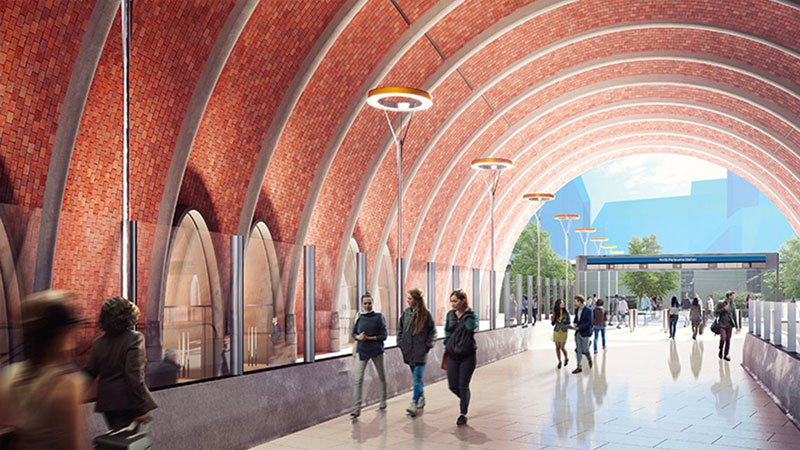
Key facts:
• Located near the corner of Arden and Laurens streets
• As the broader Arden precinct is susceptible to flooding, the station entrance has been raised 1.5 metres above the existing ground level
• The new station precinct will provide new landscaped public space featuring predominantly native species
• Dedicated pedestrian crossings on Arden Street, Laurens Street and Queensberry Street
Construction
Major construction has been tipped to continue in 2020, with progress being made at each of the new station locations and tunnelling under way in the west between North Melbourne and Kensington.
Up to six tunnel-boring machines are being used across tunnel construction to excavate about 2 million cubic metres of soil and rock, equivalent of 800 Olympic swimming pools, through Melbourne’s challenging geological conditions.
Excavation of the future State Library and Town Hall stations at City Square involving two shafts at Franklin and A’Beckett Street have been completed and capped by massive acoustic sheds.
Up to 100 underground services including telecommunications, gas, water and power were relocated and protected as well as a 120 year old brick main sewer line under the Domain interchange.
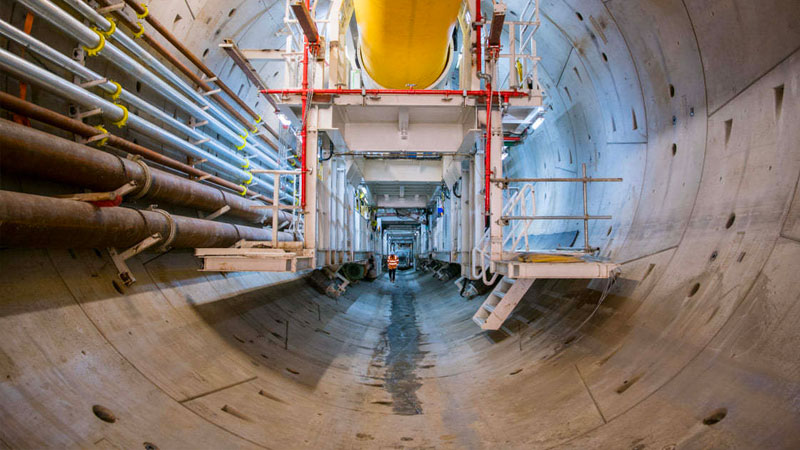
Excavation of the future State Library and Town Hall stations at City Square involving two shafts at Franklin and A’Beckett Street have also been completed and capped by massive acoustic sheds.
The partnership has also excavated the station cavern for the new State Library Station, located 36 metres under Swanston Street.
Support structures and a roof slab for the tunnel’s eastern entrance at South Yarra have also been constructed, as well as 1.8 kilometres of new track being laid to connect the tunnels to the existing Cranbourne and Pakenham lines.
Work has also commenced on the $16 million Victorian Tunnelling Centre, where up to 800 local workers will be trained in underground construction and tunnelling.
Complications
The mega-transport project has not been without its controversy. A report released last year, undertaken by the state's auditor-general, revealed the cost of initial construction-focused works had blown out.
The consortium adopted an aggressive negotiation strategy on the Metro Tunnel, dramatically halting tunnelling on the project in a dispute over overruns of up to $3 billion, and threatening to withdraw from the project entirely if the Victorian government did not cover cost blowouts.
Costs had been run up on the project partially due to the scope of the project being widened and unexpected technical risks, including geological issues.
The blowout was also partly driven by unexpected issues at the State Library station precinct.
Rail Projects Victoria had originally budgeted the State Library works at $75.7 million which eventually hit $201 million.
Sources close to the project said the density of the soil was continuing to cause digging delays while another construction specialist blamed a lack of senior engineering staff for the issues.
Digging resumed midway through December despite a deal yet to be struck on who would help pay for a multi-billion-dollar cost blowout.
Consortium member also Lendlease parted company with its struggling engineering arm, selling the segment of the business to to Spanish group Acciona for $180 million in an attempt to mitigate anticipated losses.
The Melbourne Metro Tunnel project was excluded from the sale along with the NorthConnex motorway in Sydney and Kingsford Smith Drive road project in Brisbane which Lendlease will see through.














